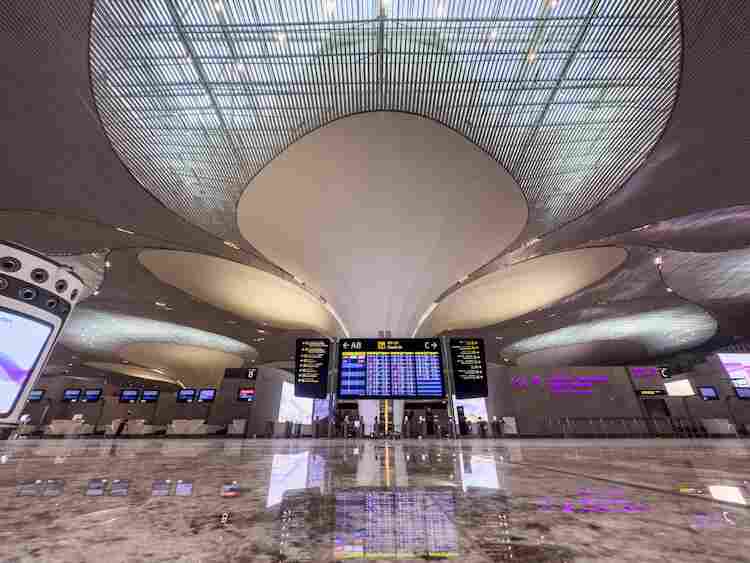An important turning point in India's aviation industry will be reached on October 8, 2025, when Prime Minister Narendra Modi opens the Navi Mumbai International Airport (NMIA). The airport's design aims to improve connections throughout the region and relieve traffic at Mumbai's current airport.
NMIA is situated on a 1,160-hectare plot of land in Ulwe, Navi Mumbai, around 37 kilometres from South Mumbai. Terminal 1, which can accommodate 0.8 million metric tonnes of freight and 20 million people a year, is part of the first phase.
Large aircraft like the Airbus A380 can be accommodated on the airport's 3,700-meter runway. Three more terminals and a second parallel runway are part of the expansion plans, which are intended to increase the airport's capacity to 90 million passengers annually by 2036.
The terminal at NMIA was created by the well-known Zaha Hadid Architects and has architecture reminiscent of lotuses. Engineered to withstand seismic shocks, wind pressures, and heavy loads, the design includes 17 mega columns supporting the roof canopies and 12 sculpture columns that resemble unfolding petals. In addition to improving the terminal's aesthetic appeal, this artistic approach guarantees structural stability.


.jpg)
.jpg)
.jpg)
.jpg)
.jpg)
.jpg)